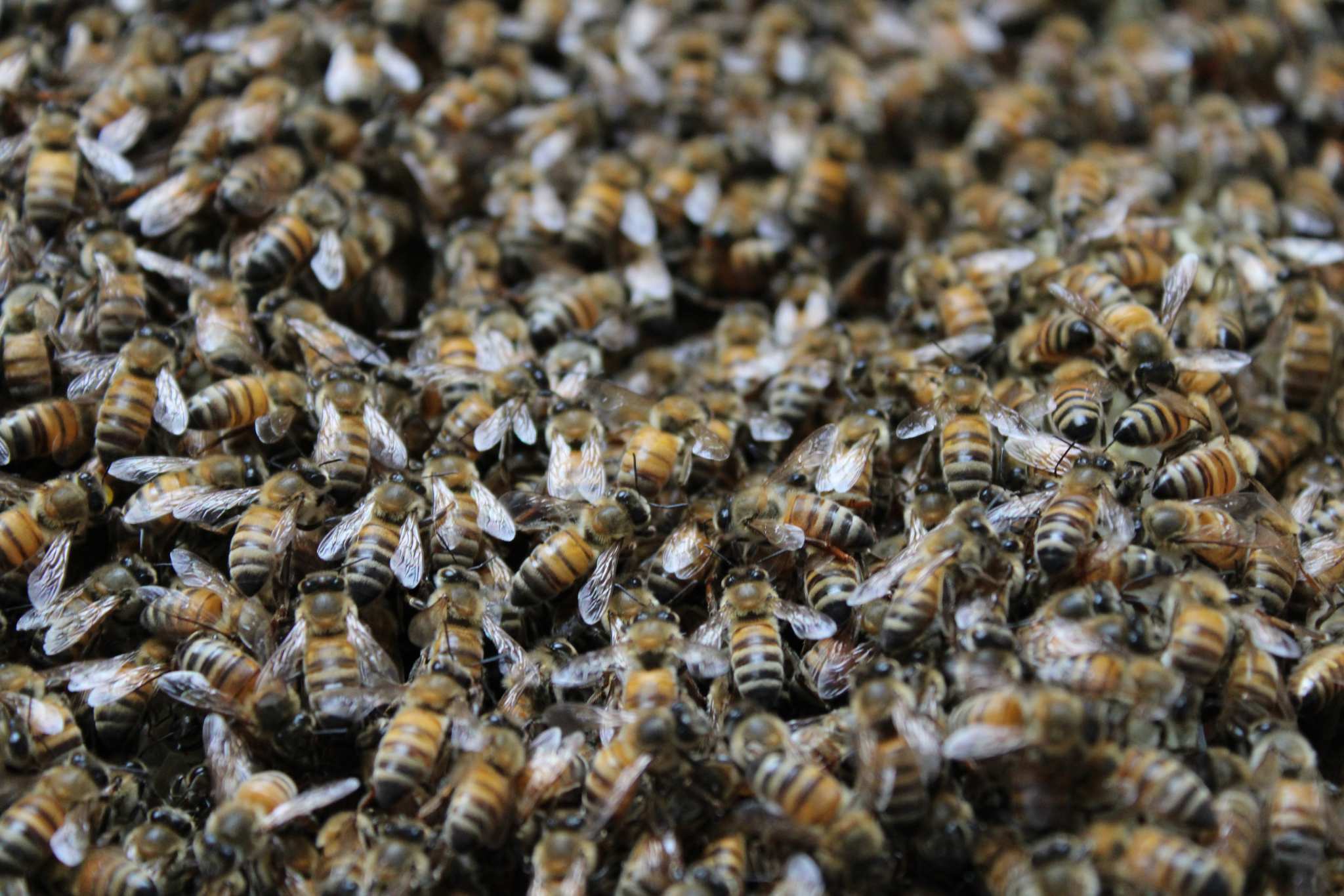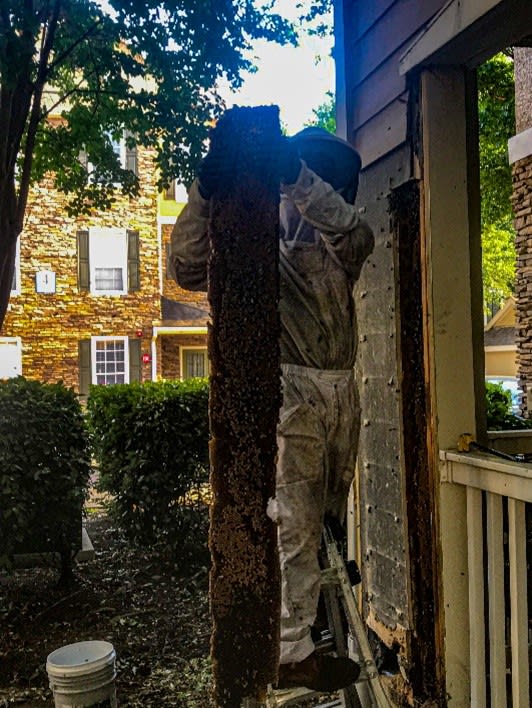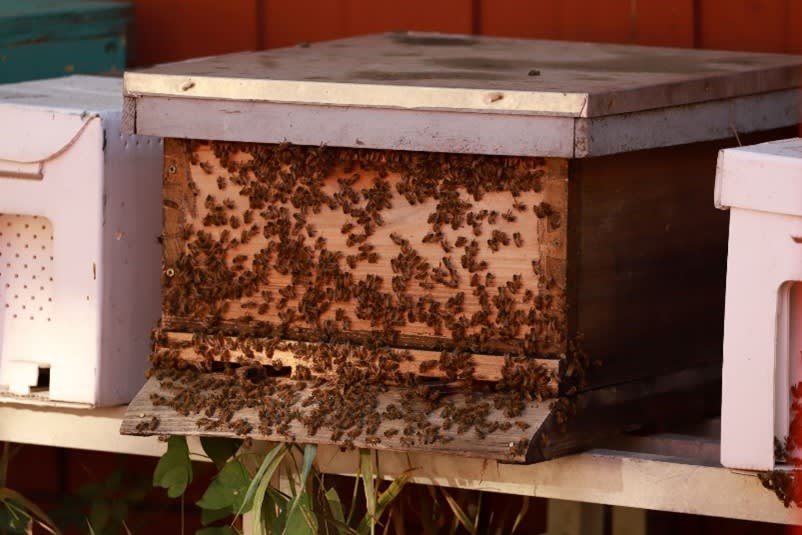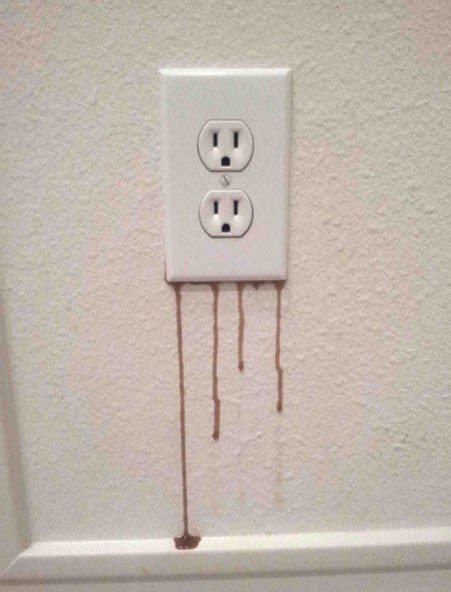- Call now!

The importance and impact of the honey bee on modern human life is invaluable. There’s an old saying that “one out of every three bites of food require pollination from a bee”. While there’s no way of calculating this claim, originally from a 1970’s pollination guide, the fact that there exists a vast industry of commercial pollinating service providers should be enough to let you know how important these majestic little creatures are to our food supply.
When you discover a colony of bees has made its home on your property you might be alarmed, and rightly so. Although bees are important pollinators, they can pose a serious danger to you, your family, and neighbors. So what options do you have?
You may be thinking that there are easy Do-It-Yourself extermination solutions, however this will end up costing you WAY more, either down the line, or worse immediately.

We won’t mince words: when you opt for a DIY solution, you’re putting yourself, your family, and your neighbors in danger. On average, over 60 people a year die needlessly from bee and wasp stings. Don’t become part of that statistic; hire a trained professional, because even if you successfully kill off the hive, that’s just the beginning of your problems.
When a colony is looking for a place to build during their swarm, the searching drones are looking for a location with two main qualities: An enclosed space, and lots of room to build. Unfortunately, a common place that meets these requirements is inside the wall of a house. Because the frames of the average house are made of wood, bees feel right at home as hollowed out trees are where they typically build in the wild. Some bees will build a hive as tall as the wall itself!

With that in mind, consider what happens when you exterminate the colony and leave it inside your wall. Honey bees have to keep their hives at a very specific temperature, between 94 and 96 degrees Fahrenheit. If the hive drops below this temperature it effects the ability of larvae to mature properly, so the bees will huddle together and vibrate their bodies to keep the temperature up (if you’re wondering: yes, they keep their hives 95 degrees all throughout the winter!). If it rises above this temperature range the structure of the hive’s wax will begin to weaken; to cool down the hive they will gather on the outside of the hive and fan it off with their wings. This behavior is known as “bearding” and can be seen in the picture on the left.

So what happens when the bees are exterminated and aren’t there to cool down their hive on a hot summer day? It begins to melt. Once the outdoor temperature starts to reach around 98 degrees the honey comb structure begins to severely weaken. After just a few days at this temperature the beeswax covering the honey comb will no longer be able to hold the honey and will begin to seep out inside the wall. After a few more days the entire hive will begin collapsing inside the wall. At first a homeowner wouldn’t be aware this is happening, until pests like cockroaches and mice start to show up and feast on the honey and larvae left behind.
Not only will the pests treat the inside of your wall like a free all-you-can-eat buffet, the leftover honey dripping down the inside of your wall will eventually seep through the porous and start leaking into your home, damaging paint and wallpaper and bringing the pests inside your home.
Depending on the size of the hive and the amount of honey, the cost for repairs and pest control in this situation can easily total in the tens of thousands if ignored. This is why we always recommend consulting with an expert on these matters instead of taking things into your own hands.
All of our live removal technicians are professional carpenters, skilled in home repair. We can take care of any type of siding: Vinyl, Wood, Brick, Stucco, and more! With decades of experience under our belts, you can rest assured the job will be done right and done fast. Call us today at (833) 233-7233
Copyright 2022 Bee Removal. all right reserved.